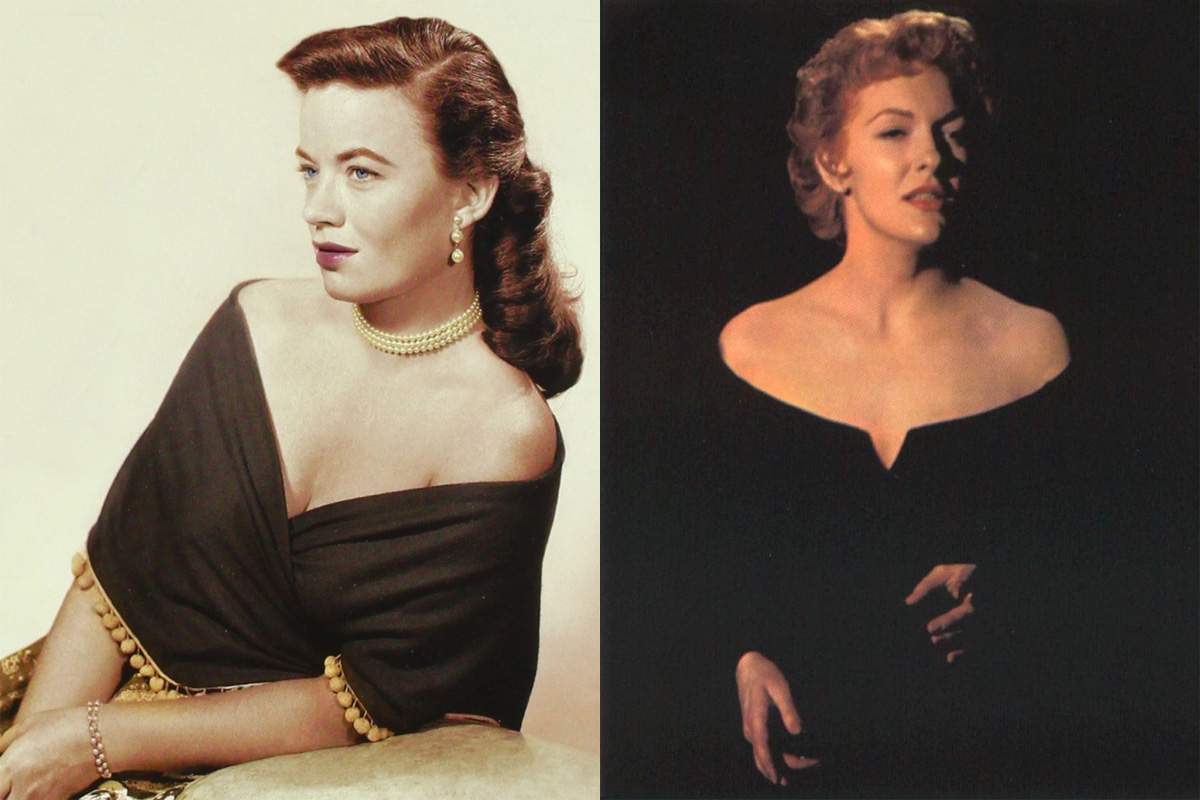
For every Ella Fitzgerald and Billie Holiday, there were dozens of other jazz and ballad singers who vied for their chance in the spotlight. This week on the program, I’ll be exploring the work of two: Lucy Reed and Lucy Ann Polk. Both Lucys were active singers in the 1950s, and both got their start singing in big bands. But artistically, these Lucys were very different: Polk was light and charming, while Reed smokey and seductive. We’ll hear from their catalogs on this episode.
[Originally aired May 4, 2018 - Lucy Reed's centennial is January 14, 2021]
Lucy Ann Polk
Lucy Ann Polk was the younger of two, but got her start as a singer before Reed. She was born in 1927 in Idaho, and started singing with her siblings very early on. She and her siblings formed the vocal group called “The Four Polks,” and later changed their name to the "Town Criers." Lucy Ann was the youngest, and in the mid 1940s, the group sang with the bands of Tommy Dorsey, Kay Kyser, and Les Brown. The group eventually split, but Brown liked Lucy Ann’s voice, so he kept her on as his singer.
In her early recordings with Les Brown, she exhibits a cool maturity, despite only being around 22 years old. It’s easy to hear why Les Brown’s trumpeter Wes Hensel called her “one of the grooviest people who ever walked this earth.”
Polk sang as a soloist with Les Brown from about 1948 until 1954. During this time, she continued to develop her cool, laid back style, and audiences caught on. While singing with Brown, Polk was named the best girl singer by Down Beat magazine four years in a row.
By 1954, Polk had left Brown’s band to try and make it on her own. But before she did that, she took one detour recording with one of Brown’s sidemen, saxophonist Dave Pell. Pell had his own small group called the Dave Pell Octet, and in 1953, he recorded an album of all Jimmy Van Heusen and Johnny Burke tunes featuring a number of Les Brown alums, including Lucy Ann Polk.
These recordings are very much in the cool jazz idiom, similar to Miles Davis and Gil Evans’ album Birth of the Cool, or some of collaborations between Mel Tormé and Marty Paich. The arrangements here are by West Coast jazz musicians Shorty Rogers and Wes Hensel.
In the late 1950s, Lucy Ann Polk recorded as a solo artist, releasing one great album called Lucky Lucy Ann. On this album, she worked with Marty Paich, who understood Polk's cool jazz style.
Her voice is bright and clear, and she had a great sense of swing. Unfortunately though, this one album from 1957 is really all we get from Polk. By 1960, Lucy Ann Polk retired from singing altogether. One can only imagine what she could have accomplished had she not taken herself out of the business.
Lucy Reed
Lucy Reed was actually several years older than Lucy Ann Polk. She was born in 1921 in Wisconsin. But Reed’s career didn’t begin until she was almost 30 years old, as opposed to Polk, who was a professional singer when she was still a teenager.
Lucy Reed was married with a son by age 20, but when her husband died in combat in World War II, her life changed directions. She pursued singing, and was soon hired first by bandleader Woody Herman and then by bandleader Charlie Ventura. It was with Ventura’s band where Reed developed her chops, learning everything from singing a bop tune to knowing how to bow on stage. Her first recording ever was with Ventura’s group, an RCA Victor record called “You’ve Got a Date With The Blues.” Reed was 29 years old at the time.
In 1951, Lucy Reed made the move to Chicago to work in their thriving night club and radio scene. She quickly made waves there, appearing on Chicago television, and even earning a cover story for Down Beat magazine. While in Chicago, she teamed up with pianist Dick Marx and bassist John Frigo, and the trio became the talk of the town for the next three years as nightclub performers.
In August of 1955, they finally made it to a recording studio to record several songs, three of which made it onto Reed’s debut solo album for Fantasy records in 1955 called The Singing Reed.
To fill out the rest of the album, Fantasy brought in one of their up-and-coming pianists to accompany Reed, Bill Evans. Evans, of course, had a monumental career—just two years later he would record with Miles Davis on the landmark album Kind of Blue. But here he is early in his career, making one of his few appearances alongside a singer.
In 1957, Lucy Reed recorded one more album called This Is Lucy Reed, also for Fantasy Records. For this album, she worked with three different arrangers: Gil Evans (the man behind Miles Davis’s Birth of the Cool), George Russell (the man who revolutionized jazz harmony in the 1950s), and jazz pianist Eddie Higgins. The Gil Evans session is far out, as you might expect for Evans in the late 1950s. Higgins had a light, rhythmic touch, and was able to draw out a buoyancy in Reed’s voice that few arrangers could. And Russell’s arrangements are smoky and ethereal, matching Reed’s vocal quality perfectly.
Like singer Lucy Ann Polk, Lucy Reed career effectively ended in 1957. Reed had one more album in the 1990s, but almost nothing in between. For both singers, it was driven somewhat by market forces, with jazz singing on the way out. But mostly, it was personal. Both Lucy Ann Polk and Lucy Reed seemed to be tired of the creative life, and wanted to spend time focusing on their family instead.









